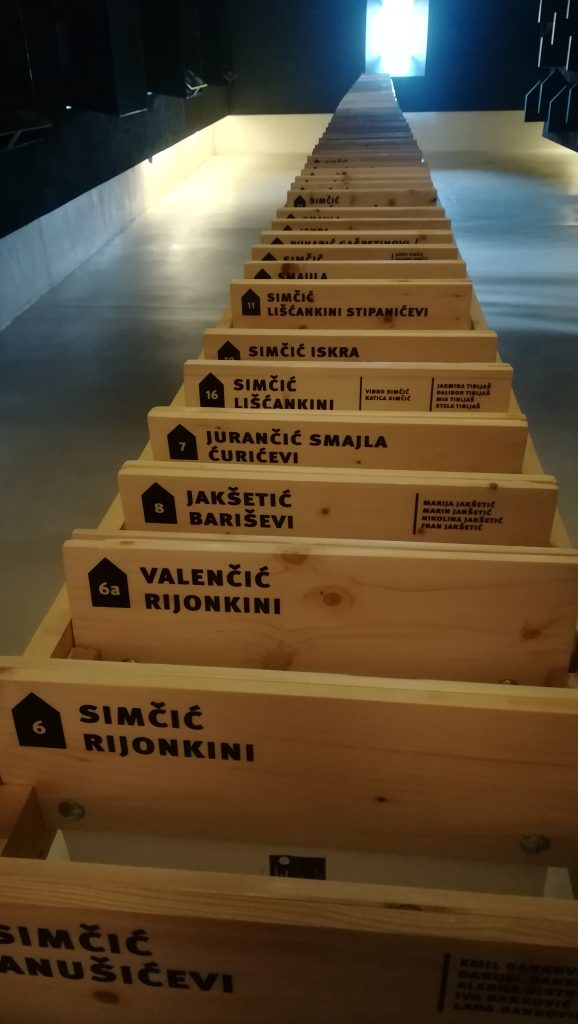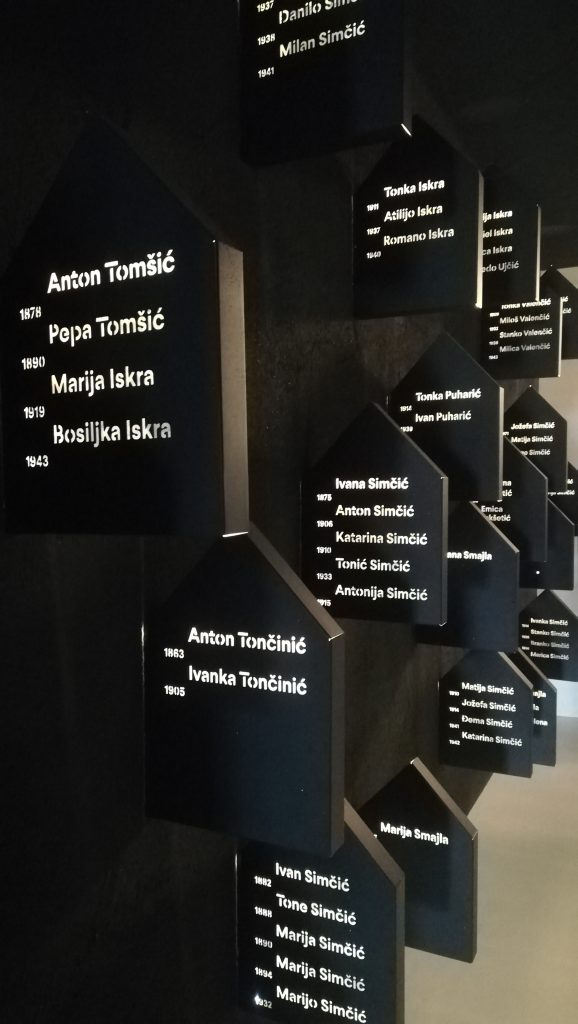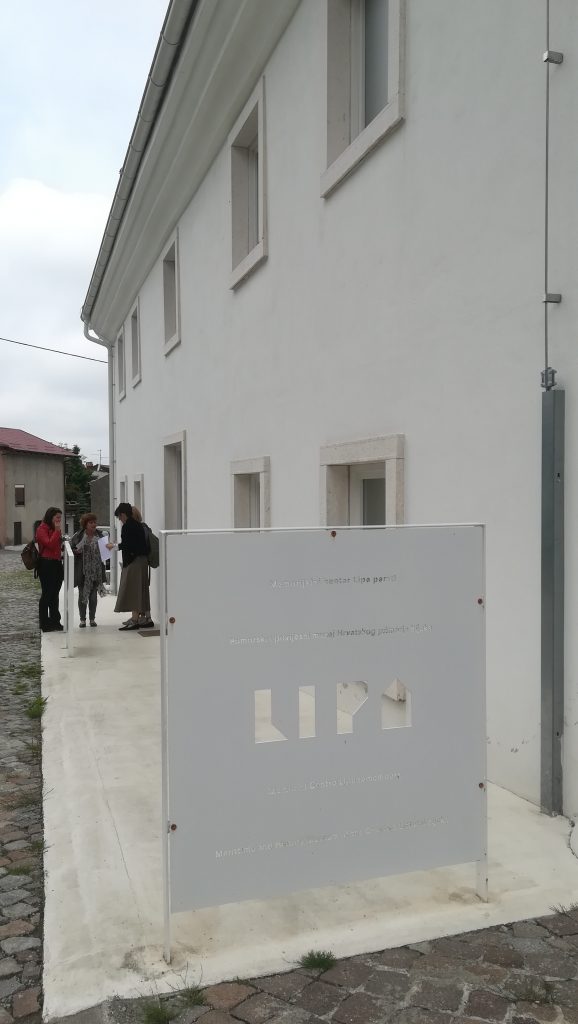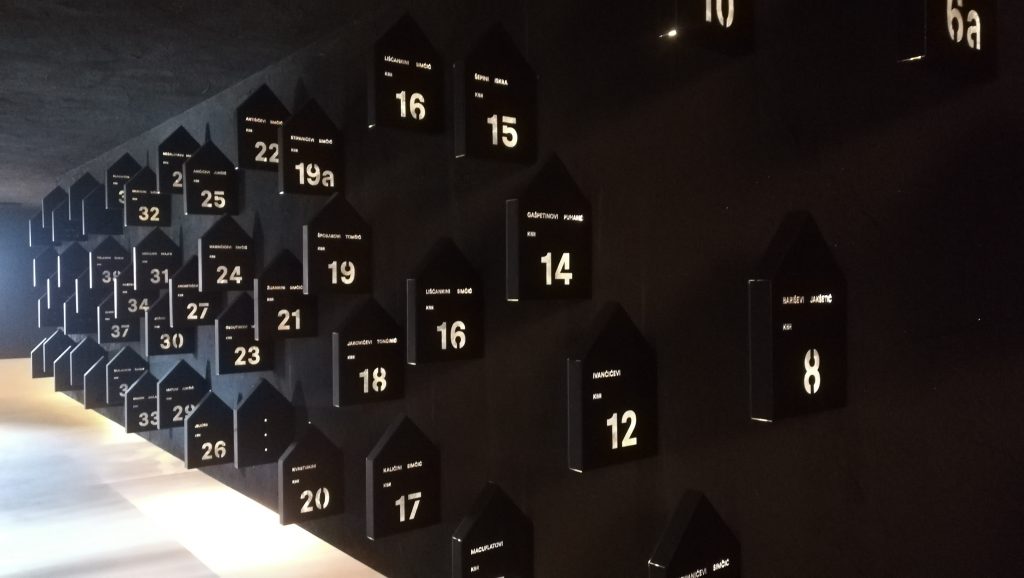The Memorial Centre Lipa Remembers
Carlota Sánchez Vidal, Historian, University of Barcelona
Cover picture: Memorial exhibition | EUROM
The small village of Lipa is located in the municipality of Matulji, in the north-eastern part of the county of Primorje-Gorski Kotar, just five kilometres from the border between Croatia and Slovenia. This fact is a defining aspect of the identity of the residents of Lipa, as demonstrated by a popular expression in the region: “We are not from Mount Ćićarija, Istria, or from the Brkini Hills, whose citizens are our neighbours from the Slovenian region; we are right on the border”.
Throughout history, the village of Lipa and the surrounding region has been a strategic territory because of two important routes that used to split there: the road that linked the coast of Croatia to the inland and the road that joined Croatia to the European continent. As a result, the region gained great geopolitical importance and has been the subject of disputes at various times in its history.
The museum building itself also demonstrates Lipa’s geographical significance. In 1756, it became home to the region’s first post office. In 1885, the building became the village’s first public school. By the end of the nineteenth century, the road that joins inland Croatia to the coast no longer ran through Lipa and the village’s strategic importance waned.

sdr 
mde
The Lipa museum has three floors and a basement. As a whole, these spaces were designed in line with the principles of the ecomuseum concept, being seen as a community museum. The local community’s cooperation in creating the programme or defining the regional identity represented in the museum has constituted the essential mission of the project, with the aim of creating new development opportunities for the region.
The white walls of the ground-floor room symbolise life, before and after the massacre that took place on 30 April 1944. They tell the tale of the region’s cultural background, with a continued settlement in the area from prehistoric times right up to the present day. In addition, the space contains a small replica of the permanent exhibition run in Lipa’s first memorial museum, which was founded at the initiative of the local community and inaugurated in the 1960s.

Going up to the first floor, the atmosphere changes completely. We enter the War Room, a dark, unsettling space that begins narrating the account of the events that took place in Lipa on 30 April 1944. In the middle of the room, there is a large table onto which the geographical region of which Lipa forms part is projected. The animated projection with a voiceover recounts the events that preceded and caused the tragedy.
The second floor is certainly the most complex of all. It contains the memorial of the massacre committed by Nazi soldiers in Lipa on 30 April 1944. At the entrance, there hangs the Order Nº 9 issued by the man who led the operation, General Kubler. The crimes against humanity committed there were carried out under this order.
Hanging on the left-hand wall of the large room, the photographs bear witness to the murders committed by the Nazis, alongside some chilling figures: in just a few hours, 296 people were killed, mostly women, children and the elderly. The Nazi soldiers took photographs to demonstrate that they had completed their mission and also to use as propaganda. The images were preserved thanks to Suzana Maraž, a worker in the photography studio to which the Nazis took their films to be developed, who decided to make copies and keep them until after the end of the Second World War, as evidence of the atrocities committed in Lipa. However, the photographs not only show the murders, but also how the Nazis stole anything of value. The last of the snapshots shows the public execution of the President of the National Liberation Committee in Lipa and his daughter.
Opposite the photographs that record the massacre committed on 30 April 1944, a number of small house-shaped structures represent each of the homes that were burned down that day in Lipa. On the front of each, the house number and the family’s surname are written, while, on the back of the house, the names of the murdered family members are listed, alongside their dates of birth. In the middle of the room, we can see the family trees of the residents of Lipa, showing the victims of the massacre from each family.
The last space on the visit is the basement, which exhibits a series of objects collected in the 1960s from villages in the region. These objects show some of the features that define the region’s identity, including its folklore, agriculture and cuisine.

The Memorial Centre Lipa Remembers should not just be seen as a platform for chronicling the massacre, but also as proof that Lipa lives on and remembers, conveying a message of peace to ensure that history does not repeat itself.
